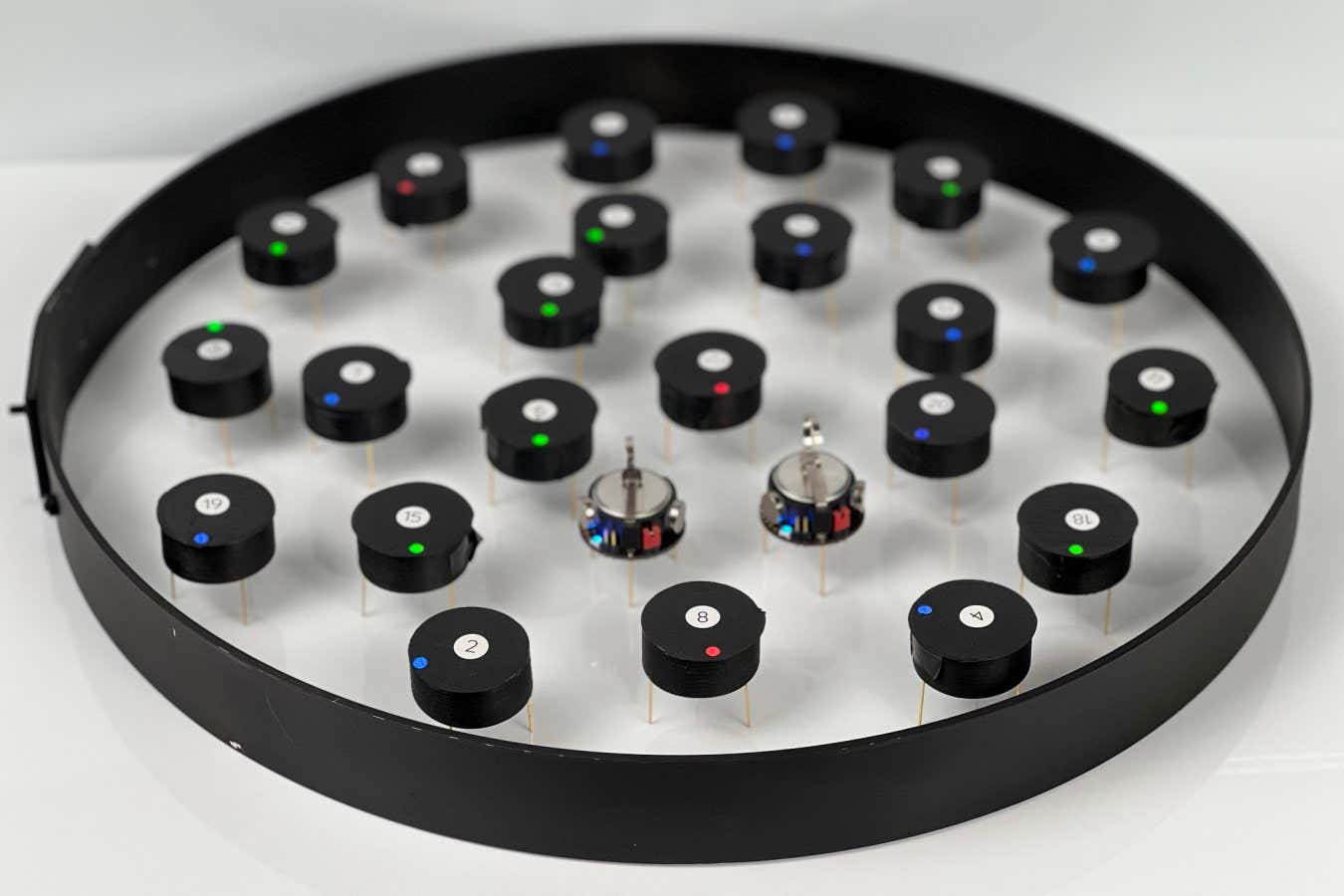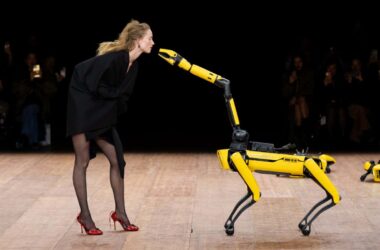Researchers from the University of Barcelona in Spain developed a swarm of small robots called kilobots that imitate the decision-making process of bees. The robots communicate with each other by flashing lights, similar to how bees use a “waggle dance” to reach a consensus on the location of their nest.
The team programmed decision-making rules into each kilobot using a mathematical model previously developed to mimic bee behavior. The kilobots, equipped with infrared signal capabilities and colored LED lights, were tested in a walled-off circular arena. Experimenting with various numbers of robots and advertising for different opinions, the researchers found that the kilobots consistently reached a collective decision within about half an hour, even with minimal direct communication between them.
Ezequiel Ferrero, a researcher at the University of Barcelona, emphasized the importance of keeping the robots simple for potential real-world applications. He explained that simplicity is crucial for tasks such as medical procedures and emergency response, where sophisticated electronics or high costs may not be practical. Additionally, Andreagiovanni Reina from the Free University of Brussels believes that making small changes to the behavior of kilobots could lead to significant effects on their decision-making process.
Reina suggested that future experiments with kilobots may unveil collective decision-making mechanisms beyond bee imitation. This research could prove beneficial for developing autonomous robots capable of making group decisions without centralized control.
Insights:
The study’s emphasis on simplicity in robot design highlights the practical considerations of using robots in various real-world scenarios. It also underlines the potential for smaller, less complex robots to be deployed in impactful roles, such as medical procedures and emergency responses, where cost and durability are significant factors.
Furthermore, the potential for uncovering new mechanisms of collective decision-making through robot experiments indicates a broader applicability of the research beyond imitating natural behaviors. This insight suggests that the study’s findings may contribute to advancements in autonomous robotics and decentralized decision-making systems.








